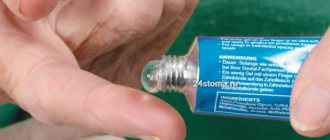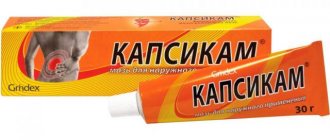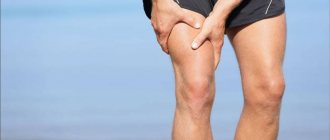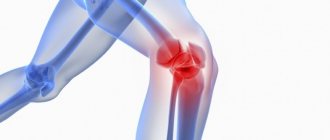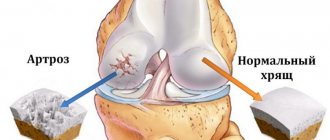Nonsteroidal anti-inflammatory drugs (NSAIDs) are one of the most popular pharmaceutical products. They are prescribed during the treatment of a number of diseases and conditions, often in entire courses. Even with clear instructions from the attending physician, many compatriots have doubts and look for information about drugs on the Internet. And then they come to the pharmacy and ask the pharmacist questions, hoping to justify their guesses or dispel doubts. In this situation, the head manager needs, on the one hand, to help the pharmacy visitor, and on the other hand, not to take on the role of a doctor. It is in this vein that we will cover the topic of topical NSAIDs today - in the form of competent answers to customer questions.
What does “when used correctly” mean? Anointed, and that’s it.
It is advisable to rub in topical forms of NSAIDs for a while rather than just apply them. The analgesic and anti-inflammatory effect of the ointment will be much higher if you do not just “anoint” it, but actively rub the product into the skin over the sore spot for some time. In the course of relevant studies, it was found that even 45 seconds of rubbing diclofenac diethylamine gel five times increased the transdermal delivery of the drug compared to simple application to the skin. And you need to remember that pain-relieving ointments based on NSAIDs act on areas of pain located immediately under the skin. If we talk about joints, then these are the knees, elbows and small joints of the hands. The local form most likely “will not reach the hip joint.” It should be rubbed “around the circumference” of the limb, for example, not only into the dorsum, but also into the palmar surface of the interphalangeal joint [6, 7].
Homeopathic ointments and gels
We can talk about homeopathy for a long time, but we will say briefly - do not use them! These are useless dummies that will do neither good nor bad. We will write a separate article about homeopathy and tell you why this is so.
Here is a list of homeopathic ointments and gels:
- Traumeel S
- Phong Thap Thu
- Pintop
- Wangprom
- Namman Muay
- Quick Fit
- T-Relief
- Richtofit-sport
The list is far from complete. Just when you see “homeopathic medicine” on the package, refuse to buy and spend the money to benefit your health.
Which topical NSAID is best?
Everything is individual. If the analgesic effect of oral and injectable forms of NSAIDs can be more or less ranked, then an objective comparative assessment of topical drugs is very difficult. The reason for this is that, along with the actual active substance, the intensity of rubbing, excipients (for example, dimethyl sulfoxide) and the placebo effect play a significant role. Most studies on the effectiveness of topical NSAIDs have focused on diclofenac and ketoprofen. The increased attention to them is due to the fact that diclofenac is the only NSAID whose topical forms are approved by the American Food and Drug Administration (FDA), and ketoprofen, accordingly, is approved in most other countries of the world. Reliable data comparing these two drugs with each other have not yet been published. No one questions the effectiveness of other non-steroidal anti-inflammatory drugs for external use (ibuprofen, phenylbutazone, piroxicam, nimesulide, etc.); each of them was the subject of several clinical trials at one time, but the geography of their use is much more modest and is often limited to a few developing countries [2, 8].
Types and principle of action of painkillers
The pharmaceutical industry offers a wide range of effective drugs with analgesic effects. They are available in the form of sprays, balms, creams, gels or ointments that help quickly relieve pain at home.
Anesthetic ointments are divided into several types:
- Nonsteroidal anti-inflammatory drugs
- their action is aimed at inhibiting enzymes that stimulate the production of prostaglandins. Thanks to this, pain, swelling and redness quickly disappear. They also have anti-inflammatory and antipyretic effects. - Chondroprotectors
- promote the restoration of cartilage tissue. Recommended for athletes in case of injuries and sprains. - Warming drugs
- act directly on skin receptors, reducing the sensitivity of the nervous system to incoming pain impulses. - Cooling agents
- provide an immediate feeling of coolness, reducing pain. - Local anesthetics
are most often based on lidocaine. Their action is aimed at blocking sodium channels in nerve endings, relieving pain.
To eliminate severe pain in adults, you can use ointments of combined action. Such products for external application have a complex effect - they quickly relieve painful spasms, accelerate the resorption of hematomas and swelling, stop inflammation and accelerate the healing of injuries and damage.
Oxolinic ointment is an old and proven remedy. It is used for preventive purposes when there is a threat of infection with viruses during an epidemic or a regular seasonal outbreak of influenza. Read more in the article: “oxolinic ointment - indications for use.”
Do excipients in the local form of NSAIDs matter?
Yes, they improve skin permeability and perhaps enhance the therapeutic effect in a certain way. In separate studies, for example, topical formulations of diclofenac with dimethyl sulfoxide (DMSO) and diclofenac diethylamine 1.16% have been shown to penetrate the skin faster than “regular” diclofenac sodium gels. In addition, DMSO itself may have a slight anti-inflammatory effect. There is no solid evidence of an increase in the analgesic effect due to the listed supplements, but their use at least helps to overcome the individual characteristics of the skin [7, 9–11].
Analgesic ointments after depilation
An anesthetic for deep bikini depilation helps to soothe and soften the skin of intimate areas, reduce discomfort and unpleasant sensations, and speed up healing after sugaring or using an epilator.
Effective products after deep bikini depilation:
- Emla;
- Lidocaine cream;
- Dr. Numb;
- TKTH;
- Akriol Pro;
- Deep Numb;
- Light Dep.
Topical products most often have a pleasant cooling effect. They quickly eliminate discomfort, swelling, redness and irritation, and accelerate the restoration of damaged skin.
Many ointments, gels and creams contain antibacterial components that prevent pathogenic microorganisms from penetrating skin microtraumas. Such products are available in several varieties and are intended for application both after the procedure and to soothe and anesthetize the skin after hair removal.
Can I take NSAID tablets and use the topical form at the same time?
This is not directly prohibited by the instructions for use, but it is not recommended, and, apparently, does not make sense. According to the only credible study on this topic, there was no significant increase in the analgesic effect when combining local and systemic forms of NSAIDs. At the same time, this use of drugs slightly increased the frequency of rectal bleeding. In clinical trials, oral administration of diclofenac and ibuprofen at doses 2 and 3 times higher than recommended also did not lead to increased pain relief. The effect of a combination of tablets and a topical form of NSAIDs will most likely not be pronounced. At the same time, the likelihood of unwanted reactions slightly increases. Therefore, this combination is not recommended. Usually, if a local remedy does not help, the doctor cancels it and transfers the patient to oral administration [12, 13].
The best pain relieving ointments
Cheap ointment for bruises with an analgesic effect is selected individually, taking into account the main active ingredient, the mechanism of action of the drug and the cause of pain.
Advertising:
List of the best ointments for external use with an analgesic effect:
Candida fungi, the size of which is less than one hundredth of a millimeter, live on the mucous membranes of the colon, mouth, vagina, and foreskin, without causing any unpleasant sensations to a person. Read more in the article: “treatment of candidiasis: quickly and effectively.”
| Medicine | Active substance | Manufacturer | average cost |
| Traumeel S | Arnica, calendula, witch hazel extract | Biologische Heilmittel Heel GmbH (Germany) | 525-575 rubles |
| Diclofenac | Diclofenac | JSC Sintez, Russia | 25-75 rubles |
| Dolobene | Heparin sodium, dexpanthenol | Merkle GmbH, Ludwig-Merklestrasse 3, D-89143, Blaubeuren, Germany. | 375-395 rubles |
| Finalgon | Nonivamide | JSC Sanofi Russia, Russia | 300-345 rubles |
| Capsicam | Nonivamide | JSC "Grindeks", Latvia | 200-320 rubles |
| Voltaren | Diclofenac | Novartis Pharma (Switzerland) | 350-370 rubles |
| Ketonal | Ketoprofen | Sandoz dd (Slovenia) | 80-110 rubles |
| Fastum | Ketoprofen | A.Menarini Pharmaceutical Industry's Group (Italy) | 270-350 rubles |
| Emla | Lidocaine, prilocaine | Aspen Pharma Trading Limited (Ireland) | 1550-1650 rubles |
These painkillers belong to non-steroidal anti-inflammatory, homeopathic, cooling, warming drugs, as well as chondroprotectors.
Treatment with Capsicam
Advertising:
Capsicam is a combination drug that combines a rapid warming effect with anti-inflammatory properties. The drug is based on gum turpentine in combination with camphor, which provide a “burning” result. Capsicam reduces unpleasant, painful sensations and accelerates blood circulation at the site of application. The effect of the drug lasts for 5-8 hours.
The ointment should be applied only with a special plastic applicator, which is included with the product, and make sure that Capsicam does not get into the eyes or mucous membranes.
Productivity recommends applying no more than 1-2 g of ointment to one area of the body, otherwise severe burning and even skin burns are possible. For the same reason, the site where Capsicam is applied cannot be insulated.
The drug has several contraindications for use - hypersensitive skin, moles, scratches, bruises and other damage at the site of application, acute arthritis. Capsics should not be used to treat pain during exacerbation of any inflammatory disease.
Use of Diclofenac
Diclofenac is one of the most common and affordable ointments with a quick analgesic effect. The drug is well tolerated by the body, reduces discomfort, swelling and redness. Can be used to reduce bumps and bruises, including those on the face. The main advantage of Diclofenac is that it affects not only skin cells, but penetrates into the deeper layers, providing a therapeutic effect on joints and muscle tissue.
The active components of Diclofenac stop the aggregation of platelets in the blood, thinning the blood, preventing the appearance of edema and hematomas. Diclofenac has a small number of contraindications:
Advertising:
- moles, scratches and other damage at the site of application;
- psoriasis;
- eczema;
- children under 6 years of age;
- third trimester of pregnancy;
- breastfeeding period;
- increased sensitivity.
In the first and second trimesters of pregnancy, the use of Diclofenac is permitted. The anesthetic should not be used if you are hypersensitive to non-steroidal anti-inflammatory drugs, including urticaria or aspirin-induced asthma.
Emla after depilation
Emla is an analgesic cream based on lidocaine and prilocaine, which is used to restore and relieve pain of the skin after deep bikini depilation, sugaring or permanent makeup.
The pharmacological agent is well tolerated by the body, so it can be prescribed in childhood or adolescence. Emla is often used before various surgical interventions, punctures and other medical procedures.
Emla cream can be applied to mucous tissues and genitals.
The product is applied in a thin layer - it is quickly absorbed by the skin and does not require additional rubbing. Does not leave a greasy film or stains on clothes. If necessary (with rapid absorption or a large area of application), Emla cream is applied to the skin again.
The product should be left on the skin for 1-2 hours; for maximum anesthesia, the cream should be left for a longer time. Emla has a minimal number of contraindications - pregnancy and increased sensitivity to the drug. Use during breastfeeding is allowed only with a doctor's permission.
Is it possible to use topical NSAIDs for stomach erosions or ulcers?
According to the instructions, it can be done “with caution.” The concentration of the active substance in the blood plasma after the use of topical NSAIDs is less than 10% of that achieved by oral administration. The incidence of adverse reactions from the gastrointestinal tract when using local forms of NSAIDs does not differ from that when rubbing placebo and is significantly lower than when using systemic agents. However, just in case, these drugs are not recommended to be applied to the skin during gastrointestinal bleeding and exacerbation of gastric or duodenal ulcers [5, 14].
The best combination products
Acriol pro
- Contains 2 anesthetics
- Country Russia
- Price: 901 RUR
- Active ingredients: lidocaine
- Type: cream
- Volume: 30 g
- Rating (2021): 9
The optimal combination of pain-relieving components in the composition allows you to minimize pain during burns, injuries, depilation and other cosmetic procedures. The product begins to act in 15-60 minutes; the effect can last up to 2 hours, depending on the method of application. Before use, we recommend applying a small amount to a limited area of skin to assess its reaction. Allergies often occur to anesthetics.
- Advantages
- Lasts a long time
- Wide range of applications
ARAVIA Professional Pre-depilation gel
- The best pain-relieving ointment for hair removal
- Country Russia
- Price: 334 RUR
- Active ingredients: mint camphor, menthol
- Type: gel
- Volume: 300 ml
- Rating (2021): 9
The product contains only natural ingredients that have a cooling and, therefore, analgesic effect, which ensures painless hair removal on any part of the body. There are also substances with anti-inflammatory and healing effects, which helps avoid irritation after the procedure.
- Advantages
- Pleasant aroma
- Does not require rinsing
Healer with badyaga for bruises and contusions
- Acts gently
- Country Russia
- Price: 91 RUR
- Active ingredients: glycerin, propylene glycol extract of badyagi and other plants
- Type: gel
- Volume: 30 ml
- Rating (2021): 9.5
The product contains natural extracts of medicinal herbs, which, at a minimum, significantly reduces the risk of allergies. It has the consistency of a scrub, due to which it has a mild irritating effect, increasing blood flow to the damaged area and eliminating swelling. The product must be applied immediately after injury; the later, the weaker the effect may be. Suitable for children's skin.
- Advantages
- Price
- Compound
First aid for bruises and contusions
- Best decongestant
- Country Russia
- Price: 130 RUR
- Active ingredients: camphor, extracts: bodyagi, sage, vitamins
- Type: cream-balm
- Volume: 75 ml
- Rating (2021): 9.5
The best cream! And this is not an exaggeration. It contains irritating substances that accelerate the resorption of hematomas and relieve swelling, and vitamins that help restore damaged blood vessels - vitamin C and nicotinic acid. Long-term use until complete healing is possible. The only contraindication is the presence of an allergic reaction.
- Advantages
- Price
- Large volume
- Suitable for treating scars and scars
- Safe
How many times a day and for how long can you apply such drugs?
Typically three to four times a day for two weeks. Topical NSAIDs act quite quickly - the effect occurs within an hour - and help control acute somatic pain of moderate intensity. They cope worse with chronic pain. If there is no effect within two weeks of proper use, you should consult a doctor. There is a chance that he will recommend switching to oral forms or another group of drugs.
Sources
- Derry S, Conaghan P, Da Silva JA, et al. Topical NSAIDs for chronic musculoskeletal pain in adults. Cochrane Database Syst Rev. 2016; 4: CD007400. https://www.cochranelibrary.com/cdsr/doi/10.1002/14651858.CD007400.pub3/full
- Derry S, Wiffen PJ, Kalso EA, et al. Topical analgesics for acute and chronic pain in adults – an overview of Cochrane Reviews. Cochrane Database Syst Rev. 2017; 5: CD008609. https://www.cochranelibrary.com/cdsr/doi/10.1002/14651858.CD008609.pub2/full
- Klinge SA, Sawyer GA. Effectiveness and safety of topical versus oral nonsteroidal anti-inflammatory drugs: a comprehensive review. Phys Sportsmed. May 2013; 41(2): 64–74. https://www.ncbi.nlm.nih.gov/pubmed/23703519
- Kloppenburg M, Kroon FP, Blanco FJ, et al. 2021 update of the EULAR recommendations for the management of hand osteoarthritis Annals of the Rheumatic Diseases 2019; 78: 16–24. https://ard.bmj.com/content/78/1/16
- Honvo G, Leclercq V, Geerinck A, et al. Safety of Topical Non-steroidal Anti-Inflammatory Drugs in Osteoarthritis: Outcomes of a Systematic Review and Meta-Analysis. Drugs Aging. 2019; 36(Suppl 1): 45–64. https://www.ncbi.nlm.nih.gov/pmc/articles/PMC6509095/
- Hasler-Nguyen N, Fotopoulos G. Effect of rubbing on the in vitro skin permeation of diclofenac-diethylamine 1.16% gel. BMC Res Notes. 2012 Jun 21; 5: 321. https://www.ncbi.nlm.nih.gov/pmc/articles/PMC3424122/
- Hagen M, Baker M. Skin penetration and tissue permeation after topical administration of diclofenac. Curr Med Res Opin. 2021 Sep; 33(9):1623–1634. https://www.tandfonline.com/doi/full/10.1080/03007995.2017.1352497
- Rafanan BS Jr, Valdecañas BF, Lim BP, et al. Consensus recommendations for managing osteoarthritic pain with topical NSAIDs in Asia-Pacific. Pain Manag. 2018; 8 (2): 115–128. https://www.futuremedicine.com/doi/10.2217/pmt-2017-0047?url_ver=Z39.88-2003&rfr_id=ori:rid:…
- Pradal J, Vallet CM, Frappin G, Bariguian F, Lombardi MS. Importance of the formulation in the skin delivery of topical diclofenac: not all topical diclofenac formulations are the same. J Pain Res. 2019; 12: 1149–1154. https://www.dovepress.com/importance-of-the-formulation-in-the-skin-delivery-of-topical-diclofen-pee…
- Galer BS. A comparative subjective assessment study of PENNSAID® and Voltaren Gel®, two topical formulations of diclofenac sodium. Pain Pract. 2011; 11 (3): 252–60. https://onlinelibrary.wiley.com/doi/abs/10.1111/j.1533-2500.2010.00420.x
- Tieppo Francio V, Davani S, Towery C, Brown TL. Oral Versus Topical Diclofenac Sodium in the Treatment of Osteoarthritis. J Pain Palliat Care Pharmacother. 2021 Jun; 31 (2): 113–120. https://www.tandfonline.com/doi/abs/10.1080/15360288.2017.1301616?journalCode=ippc20
- Simon LS, Grierson LM, Naseer Z, et al. Efficacy and safety of topical diclofenac containing dimethyl sulfoxide (DMSO) compared with those of topical placebo, DMSO vehicle and oral diclofenac for knee osteoarthritis. Pain. 2009; 143(3):238–45. https://insights.ovid.com/article/00006396-200906000-00016
- Van Amburgh J. Can Topical and Oral NSAIDs Be Combined for Pain Relief? Medscape. https://www.medscape.com/viewarticle/861740
- Roth SH. Nonsteroidal anti-inflammatory drug gastropathy: new avenues for safety. Clin Interv Aging. 2011; 6: 125–31. https://www.ncbi.nlm.nih.gov/pmc/articles/PMC3131982/
- Kowalski ML, Makowska JS, Blanca M, et al. Hypersensitivity to nonsteroidal anti-inflammatory drugs (NSAIDs) – classification, diagnosis and management: review of the EAACI/ENDA and GA2LEN/HANNA. Allergy 2011; 66:818–829. https://www.eaaci.org/attachments/668_Kowalski%20Hypersensitivity%20to%20nonsteroidal%20anti-inflamm…
- Rogers NV, Rowland K. An alternative to oral NSAIDs for acute musculoskeletal injuries. J Fam Pract. Mar 2011; 60 (3): 147–8. https://www.ncbi.nlm.nih.gov/pmc/articles/PMC3183960/
